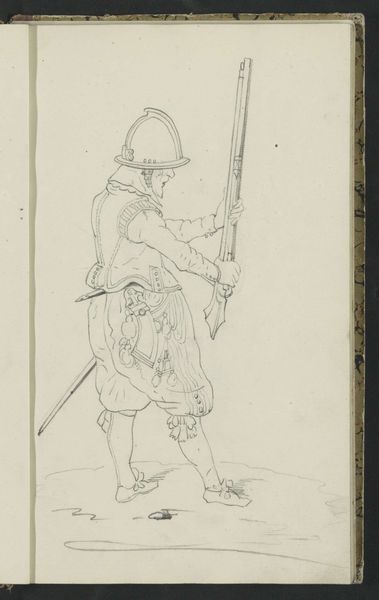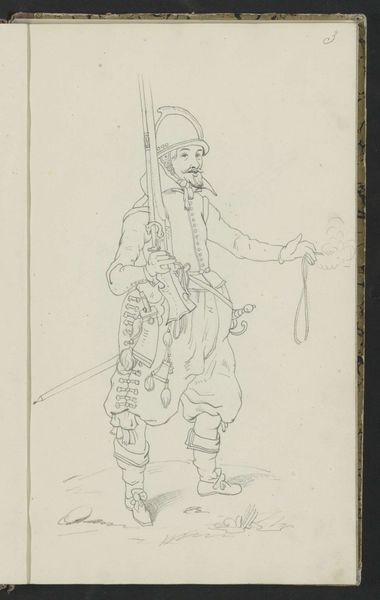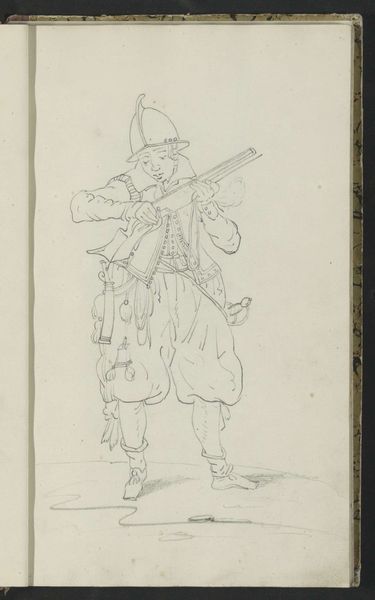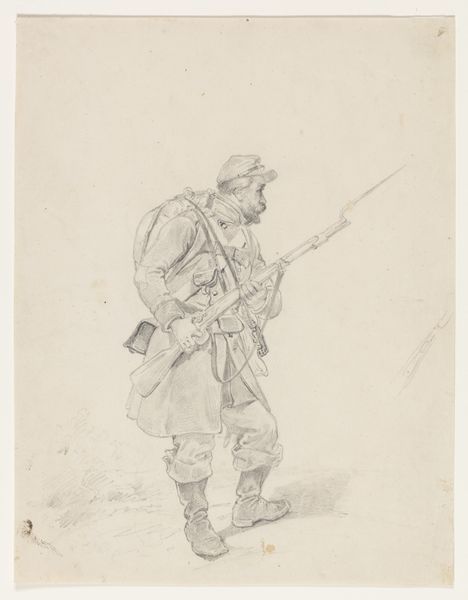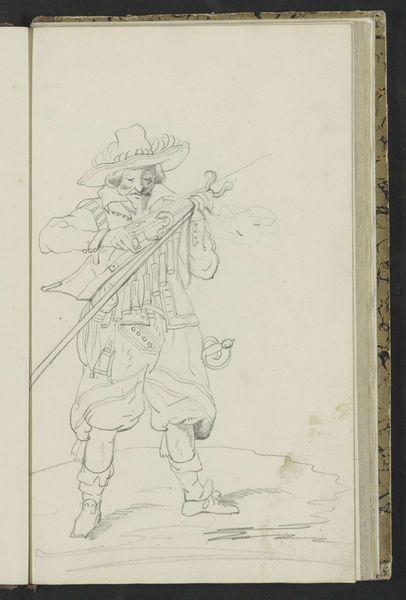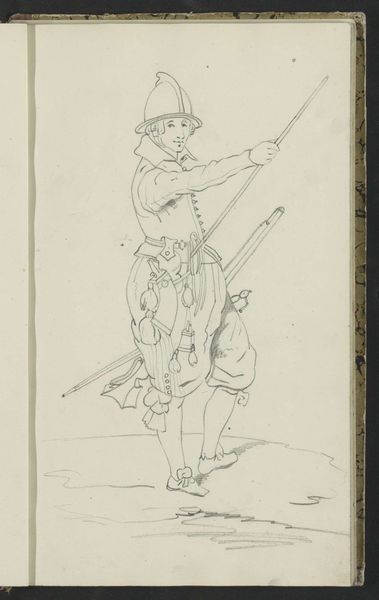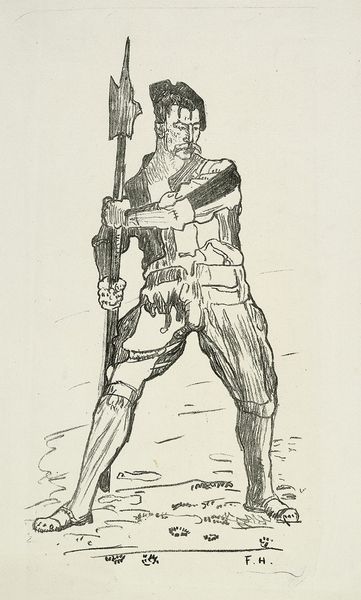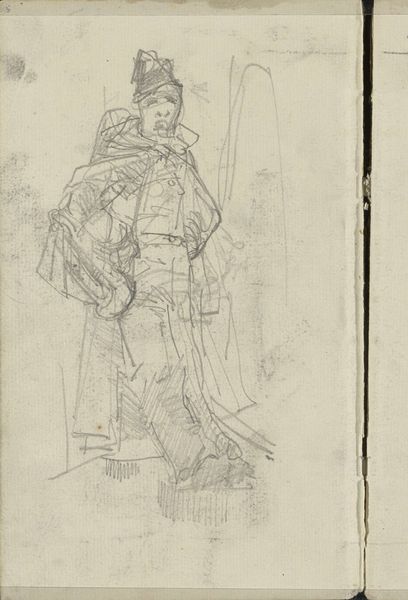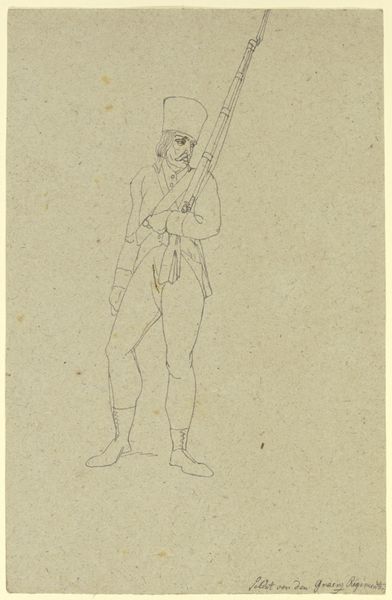
drawing, pencil
#
drawing
#
imaginative character sketch
#
toned paper
#
quirky sketch
#
incomplete sketchy
#
figuration
#
personal sketchbook
#
ink drawing experimentation
#
pen-ink sketch
#
pencil
#
sketchbook drawing
#
watercolour illustration
#
history-painting
#
sketchbook art
Copyright: Rijks Museum: Open Domain
Curator: This drawing, "Soldaat die zijn musket richt en afvuurt," or "Soldier Aiming and Firing his Musket" by Johannes Antonius Canta, appears to be a study of a historical soldier, probably made with pencil and ink sometime in the 19th century. There's a raw, immediate feel to it. What are your first impressions? Editor: It's fascinating! It looks almost like a page torn from a sketchbook, the drawing quite sparse yet detailed in the soldier's clothing and weaponry. It feels like a quick study of a re-enactor. How do you read this piece? Curator: Well, consider the material reality of image production. Canta, using relatively inexpensive pencil and ink on paper, has created not just a soldier, but also an artifact of artistic labor. What social function do you think drawings like this served during that period? Editor: I suppose they might be studies for larger paintings or prints intended for public consumption. Was it unusual to depict military subjects during this time? Curator: Not at all. But let's think about the economic structures supporting art production. Canta's process, the materials themselves, connects him to broader networks of trade and manufacturing. Was this drawing meant for the market or private use? Editor: Given its sketchbook quality, perhaps it was more of a personal exercise. Does the relatively humble material suggest anything about Canta’s position in the art world? Curator: Possibly. The readily available and relatively inexpensive materials used might suggest a focus on practice and process over finished product, a characteristic of a particular approach to art-making and maybe reflective of market demands on this artist’s labor. Editor: So by looking at the pencil and paper, we can see a connection between the artist, his working method, and the larger social and economic picture. I wouldn't have thought about that before! Curator: Precisely. Materiality gives us clues beyond the purely representational aspects of art.
Comments
No comments
Be the first to comment and join the conversation on the ultimate creative platform.

